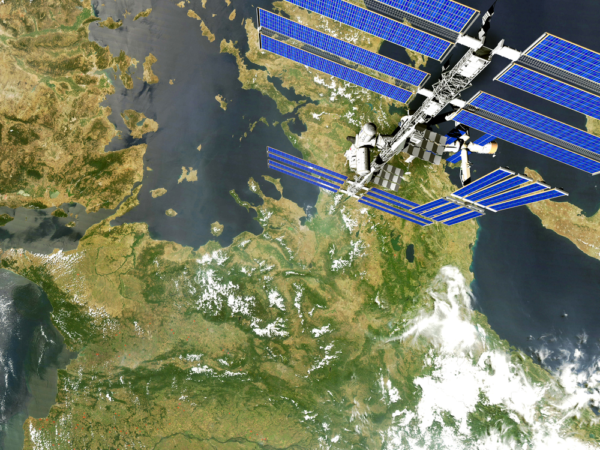
To many of us, satellites themselves may already seem like next-generation tech, but space-based technology is being transformed before our very eyes. From telecommunications to navigation, climate monitoring to defence, advanced satellites are employing cutting-edge innovations like low Earth orbit (LEO) deployment, software-defined payloads, and inter-satellite communication. These advancements are changing everything about connectivity and data collection, but they’re also not without risks. Cybersecurity for next-generation satellites is critical as these satellites evolve from isolated systems floating in orbit to crucial nodes in a global digital ecosystem. Cybersecurity in aerospace is one of the 21st century’s biggest concerns.
Cybersecurity for Next-Generation Satellites in Aerospace
Historically, satellites have been mainly concerned with physical security. Their remote locations in space have made them largely immune to any kind of tampering, but software-driven architectures and terrestrial integration have shattered this illusion. Modern satellites rely on ground stations, cloud networks, and user terminals, all of which are potential entry points for cyberattacks. The stakes are high: a breach could disrupt global communication networks, compromise national security, or even weaponize space assets.
The unique challenges of securing satellites stems from their operational environment and design. Unlike terrestrial systems, satellites operate in a harsh, radiation-filled vacuum, and there are only very limited opportunities for physical maintenance or upgrades: if any at all. Add to that the reality that they must be designed for a long lifespan of at least 10 years, which means they need to remain secure against evolving threats long after they are launched.
Additionally, the increasing use of commercial off-the-shelf (COTS) components and open standards, while cost-effective, introduce some vulnerabilities that are all-too-familiar to hackers. Small satellites and mega-constellations further complicate things. These systems prioritize affordability and scalability over bespoke security.
Vulnerability
Satellites collect and relay vast amounts of information. This data is then transmitted across vast distances and is susceptible to interception or manipulation along the way. This means end-to-end encryption and authentication are vital; yet they’re terribly challenging given the computational constraints of space hardware. Then you have the ground segment, like control centers and user devices, which can be another weak link. A compromised ground station could allow attackers to seize control of a satellite, alter its orbit, or entirely disable its functions.
High Stakes
Governments rely on satellites for intelligence, surveillance, and reconnaissance (ISR). Businesses depend on them for global supply chain management and internet access. As space becomes a contested domain, the militarization of satellites adds a whole new layer of urgency to this issue. Next-generation systems must be hardened against technical failures but also able to withstand deliberate attacks.
Key Threats and Vulnerabilities
Signal Interference in Cybersecurity for Next-Generation Satellites
One of the biggest and most immediate threats is signal interference, like jamming and spoofing. Jamming involves overwhelming a satellite’s RF signals with noise to disrupt communication with ground stations or users. Spoofing, on the other hand, is sending fake signals to deceive either the satellite itself or its receivers. GPS spoofing has already been used to mislead ships and drones: these are real-world attack concerns.
Software Exploitation in Cybersecurity for Next-Generation Satellites
Payloads and functions need to be reconfigurable via updates, and while this offers great flexibility, it also opens the door to malware and remote hijacking. A compromised software update, whether that’s introduced during development or uplinked after a launch, could allow attackers to take control of a satellite, disable the systems, or manipulate data. The use of COTS components makes this risk even greater, since these parts often lack the hardening required for space environments and may contain known exploits.
Ground Segment Attacks
Ground segment attacks are another major threat vector. Satellites depend on ground stations for command and control. That reality makes these facilities prime targets. A breach here could enable attackers to issue unauthorized commands; for example, to alter a satellite’s orbit or shut down its operations entirely.
The 1998 ROSAT satellite incident is illustrative. It seems clear now that hackers gained access via a NASA ground network, though NASA still officially denies this. Still, cybersecurity continues to be a serious concern for NASA. With next-generation constellations involving hundreds or thousands of satellites, managing multiple ground stations increases the likelihood of error or oversight.
Limitations and Constraints
The physical and environmental constraints of space add another layer of difficulty to all questions of satellite security. Satellites must operate with limited power and processing capacity, and this greatly restricts the use of resource-intensive security measures that would be a “no-brainer” in an earthbound system, like intrusion detection.
Radiation can also induce bit flips or hardware degradation, and there’s a potential for these to be mistaken for cyberattacks (or even exploited to mask them). Even more seriously, once they’re launched, these satellites are largely beyond our physical reach. Vulnerabilities have to be addressed pre-launch or through remote updates, and even that process is vulnerable to interception or tampering.
Strategies and Solutions for Securing Satellites
From pre-launch design to post-launch operations, every phase of a satellite’s lifecycle has to have cybersecurity baked in. It all starts with secure-by-design architecture. Security needs to be embedded into the satellite’s hardware and software from the outset rather than retrofitted later. Hardened processors, tamper-resistant components, and cryptographic modules can protect against physical and digital attacks.
End-to-end encryption and authentication are also critical. Satellites need the strongest of encryption protocols, and quantum-resistant algorithms may also become necessary as quantum computing advances. Authentication mechanisms like multifactor verification for commands ensure that only authorized entities can interact with the satellite, and inter-satellite links require similar protections to prevent lateral attacks within the network.
These are just a few of the solutions and strategies that aerospace manufacturing needs to plan for. To learn more and find up-to-date solutions, reach out to us at SAAB RDS now.
